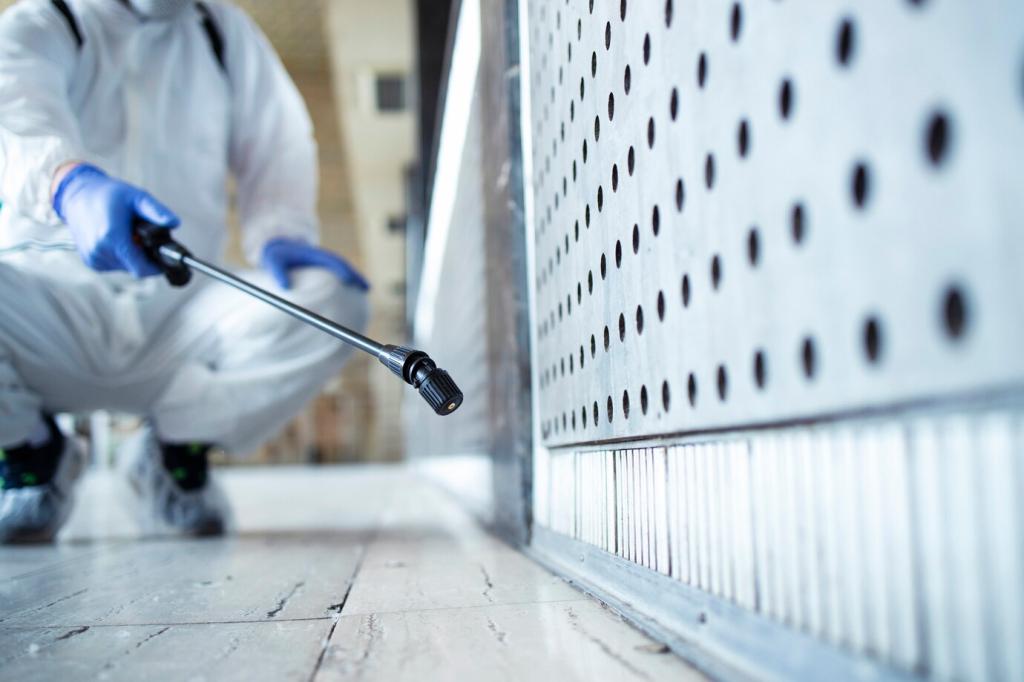Natural Remedies for Cockroach Infestations in Furniture
Chosen theme: Natural Remedies for Cockroach Infestations in Furniture. Welcome to a calm, practical guide for reclaiming your couches, chairs, and cabinets without harsh chemicals—just safe, time-tested methods and real stories that work. Join our community, subscribe for weekly tips, and share your progress.

Where Cockroaches Hide Inside Furniture
Soft furniture offers warmth, darkness, and crumbs. Roaches slip under dust covers, along piping, and into zipper channels. German cockroaches especially favor tight crevices, leaving pepper-like specks and faint musty odors. Lift cushions, inspect seams, and listen for faint rustling at night.

Proven Natural Ingredients That Target Roaches
DE is a mineral dust that damages the roach’s waxy exoskeleton, leading to dehydration. Apply an ultra-thin, barely visible layer into cracks and underneath frames. Keep it dry for best results, avoid inhaling dust, and vacuum excess later. Used carefully, it’s powerful yet family-friendly.
Proven Natural Ingredients That Target Roaches
Sugar attracts; baking soda disrupts roaches internally when ingested. Mix equal parts and place tiny portions in shallow jar lids near activity. Refresh weekly, keep away from curious pets, and combine with sanitation. This simple pantry tactic pairs beautifully with monitoring traps for clearer feedback.


Step-by-Step Furniture Treatment Plan
Precision Vacuuming with HEPA Filtration
Use a crevice tool to trace seams, buttons, zipper channels, and the dust cover perimeter. Empty drawers, vacuum rails and corners, then bag debris immediately. HEPA filtration reduces allergens from droppings and skins. This reset removes countless eggs and nymphs before any other remedy even begins.
Low-Moisture Steam for Deep Sanitation
Steam at around 212°F/100°C neutralizes eggs and nymphs on contact. Glide slowly along seams, underside frames, and drawer interiors without saturating wood. Towel off condensation, ventilate, and let furniture dry thoroughly. One careful session dramatically reduces populations while sparing your household from lingering residues.
Targeted Dusting for Long-Lasting Protection
Use a hand duster to puff food-grade DE into joints, leg sleeves, and inaccessible cracks. A whisper-thin layer works best; heavy piles get avoided. Keep dust off seating surfaces and kids’ reach. By guarding travel routes, you turn furniture from cozy shelter into inhospitable terrain.
Natural Deterrents and Barriers for Long-Term Protection
Place cedar sachets, whole cloves, or bay leaves in drawers and under cushions. Refresh weekly, rotating scents before they fade. Add peppermint oil on cotton pads inside ventilated pouches to avoid direct contact with finishes. Remember: cats are sensitive to certain oils—use carefully and sparingly.
Natural Deterrents and Barriers for Long-Term Protection
Sticky traps beside furniture legs, wall junctions, and behind consoles reveal movement paths while reducing stragglers. Test double-sided tape on leg collars for temporary barriers. Felt pads reduce micro-gaps where crumbs lodge. Traps are your scoreboard—observe, adapt, and celebrate each week of lower counts.
Monitoring, Tracking, and Community Support
Sketch your rooms, mark each trap and treated seam, and log nightly counts. Trends emerge fast: hot zones, quiet corners, rebound days. Adjust where you dust or steam. Post anonymized progress notes in our comments, and ask questions—we learn faster when victories and setbacks are visible.


Monitoring, Tracking, and Community Support
Choose one day to vacuum seams, wipe drawer rails with vinegar-water, refresh lures, and rotate sachets. Five focused minutes per furniture piece beats marathon cleanups. Set reminders, reward consistency, and record small wins. Subscribe for printable checklists and seasonal prompts tailored to furniture care.
Safety First for Homes with Kids and Pets
Pet-Wise Choices and Placement
Avoid tea tree and phenol-rich oils around cats, and never spray essential oils on pet bedding or scratching posts. Use jar traps with pinhole lids to shield lures. Supervise curious noses, wash hands after treatments, and keep materials out of reach. Comfort and safety can happily coexist.
Respecting Dusts and Indoor Air
Wear a mask and goggles while applying DE; aim for light, targeted puffs—no clouds. Clean visible excess with a damp cloth and ventilate rooms. Seal bags before disposal. Label containers clearly and store them high. Your lungs, furniture, and results will all benefit from careful handling.
Protecting Finishes and Fabrics
Always spot-test sprays on concealed areas. Avoid saturating leather or antique veneer; favor light, repeated passes with drying time. Use furniture covers during treatments, and sun-dry cushions briefly to discourage moisture-loving pests. Share material-specific questions in comments, and we’ll help troubleshoot together.
Myths, Motivation, and a Fresh Start
Deliveries, plumbing chases, and secondhand treasures can introduce roaches anywhere. There’s no shame—only solutions. Early detection, consistent cleanup, and targeted natural tactics shift momentum fast. Tell us how you discovered yours, and what first step gave you back a little calm and control.

